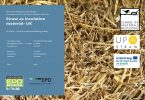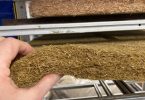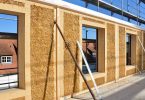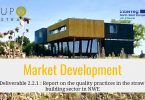This paper evaluates the range of current information in relation to construction using strawbales in walls of buildings. The material can be shown to have a number of distinct advantages and benefits, which are described, but there are also several potential technological risks that must be addressed. These are structural strength; fire risk; attack by animal pests; and moisture and mould growth. Each of these is critically reviewed to establish that for the first three of these, sufficient information already exists to indicate that risks can be minimised or avoided. There is however some lack of appropriate information on moisture transfer and condensation risk within bale walls, which necessitated further research. This involved the development of a new hygrothermal model that was subsequently used to demonstrate a relatively low risk for mould growth in most situations. Summary findings from this work are included. The paper concludes that strawbale building has relatively few problems that cannot be overcome by good design and suitable construction practices, and that its use should therefore be encouraged in appropriate situations.
Authors: Pritchard, Mark Bigland; Pitts, Adrian, 2006







